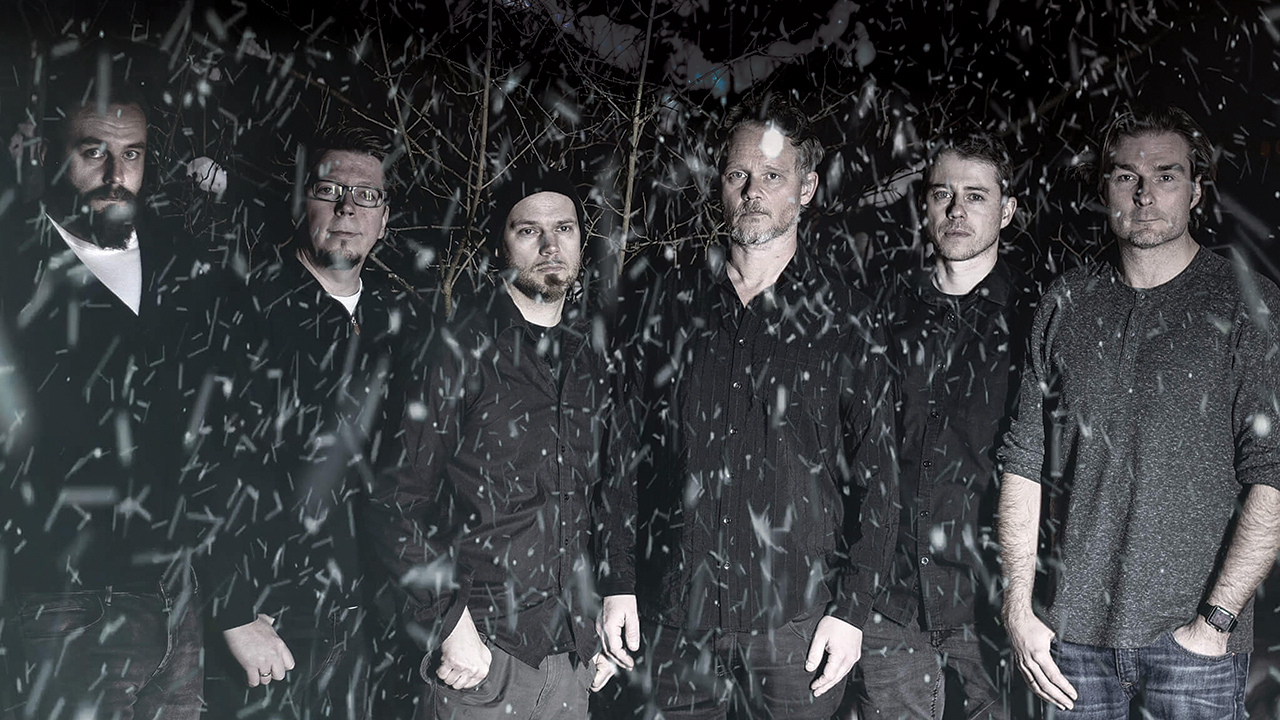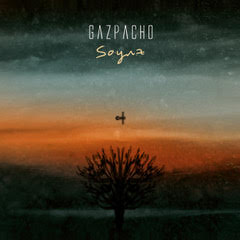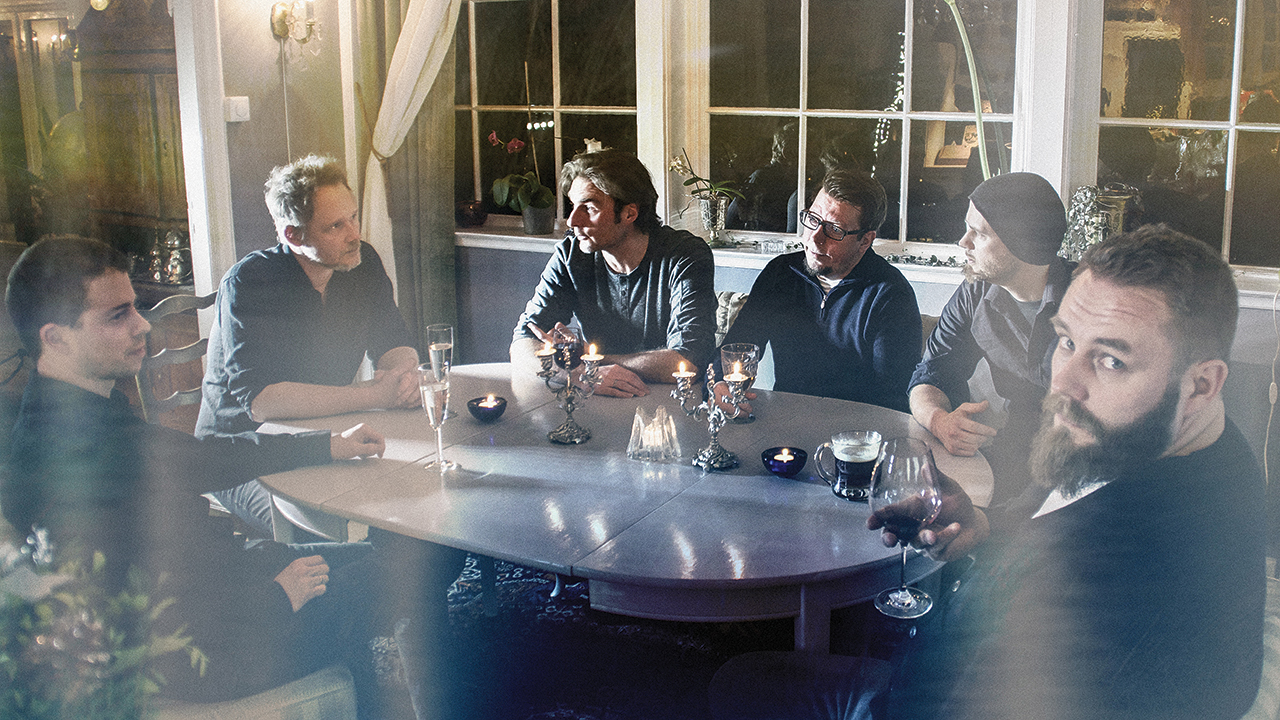
Releasing 10 albums in 15 years is no mean feat, but when that canon includes scholarly concept records about the universe, consciousness and just about everything else, extra plaudits are in order. Gazpacho’s 2018 effort Soyuz addressed the idea of being frozen in time, and it’s another welcome dose of art rock from the Norwegians....
Prog is delighted to report that the universe was not destroyed by Gazpacho’s last album, Molok. At least, not yet. In case you missed the engrossing record back in 2015, it ended with a noise that would generate a random number when used in a CD player, and if that number correlated to the position of all electrons in the universe, it could ultimately wipe out the world.
The Oslo sextet aren’t quite so reckless on their follow-up album Soyuz, thankfully. Instead of gleefully toying with the existence of mankind, they’re concentrating on the concept of being frozen in time.
It’s another heady, cerebral effort from the deep-thinking Norwegians, with their unique brew of art rock as always providing a lush foundation underneath all the metaphysics.
“I was thinking the other day, when my daughter was a two-year-old girl, they’re great fun to be around and they’re very cute and you can carry them around and they’ll do what you say,” says affable keyboardist Thomas Anderson through Skype from his home studio in Oslo.
“And now that she’s 10, I realise that two-year-old is dead. I’ve got a 10-year-old in place of the two-year-old, but the two-year-old herself is gone. Even atoms that made up that two-year-old, I think, are basically gone. So in the constant changes we’re shedding skin all the time, and you can never hang on to anything. Even your body, the body you’re inhabiting now, is not the same body that was born those years ago. So I thought, ‘Wouldn’t it be great if you could pause the world?’”
One of the main motifs of the record is the ill-fated flight of Russian spacecraft Soyuz 1 back in 1967. Cosmonaut Colonel Vladimir Komarov, who was the only person on the mission, died after the descent module crashed back into Earth after a parachute failure.
But the history books say the mission was doomed from the get-go, with Komarov knowing he was unlikely to make it back alive.

“This was back in the Cold War, and the leaders in the Kremlin wanted to get into space quickly because the Americans were doing very well,” Anderson says. “But the engineers had a list of 200 problems with the spacecraft, and they said, ‘We have to resolve all of these 200 problems or this thing can’t fly,’ and the leadership says, ‘Well, we’re sending it up anyway tomorrow.’
“But he went anyway, knowing full well that this was not going to end well, no matter what. And he became frozen in time, as sort of an iconic cosmonaut victim of this crazy space race. But at the same time, it’s almost like Schrödinger’s cat. When he was in his little capsule, he was sort of 50 per cent alive and 50 per cent dead already. There was no chance it was going to work.
“So it became a great image for the idea of being out of time, because the guy was alone in the little capsule, much like you are in your skull – you’re alone in a capsule too and you’re orbiting the Earth in that capsule, and you’re waiting for this inevitable fiery crash.
“So this is sort of linked to this whole loose concept of being frozen in time, which the album is about. It makes me think a hell of a lot more than many of our other albums, and it’s difficult to grasp, but at the same time, it makes perfect sense to me.”
“Time is extremely fascinating if you try to be philosophical about it,” singer Jan Henrik Ohme adds. “We’ve had all the good times – people talking about the good times of, ‘Ah, remember when…’ You can’t freeze it. You can be in a position or a situation where you think, ‘I just want to stay here forever,’ but you can’t. It’s absolutely merciless. It just goes on, and boof, it’s gone.”
The album was recorded in Oslo and Fredrikstad, a city closer to the Swedish border, with former member Robert Johansen back behind the drum kit following the departure of Lars Erik Asp last year. It was mixed by John Rausch, who has pop VIPs Taylor Swift and P!nk in his credits, which helped to bring a crisp aura to its sound.
Ohme says Soyuz was recorded the “modern way – when you can, where you can”.
“We’re all in full-time jobs,” he adds, nodding to the time constraints of juggling employment with life as a musician. “I manage a department at Sony Music. Thomas has his own studio and has tonnes of commercials to do. Michael [Krømer, violin] is a computer engineer – his company invents new computer chips, they’re a huge company. Kristian [Torp, bass] is working at a venue in Fredrikstad, doing everything from being the sound engineer to doing backline tech.”
The sound of Soyuz is yet another progression in the band’s weighty, prolific back catalogue, which spans an impressive 10 albums in just 15 years.
“Molok was quieter, it was more introspective. This is a more outgoing album. It’s noisier, it’s got lots more musical ideas crammed into it, it has a greater sense of space and it has a bigger sense of excitement,” says Anderson.
“This one is mixed in between the future, past and present and it’s a more current album. And by that I don’t in any way mean political or current affairs, which doesn’t interest me, but it’s an album that sort of jumps out of the speakers at you more than Molok did, and it’s a continuation of the Gazpacho sound. It sounds more modern, as it has more electronic beats and sounds.”
Take the lead track Soyuz One, for instance, which throbs with man-made thumps, while Exit Suite enjoys violin-led soundscapes grounded by punctuated clock ticks. The orchestral Sky Burial occasionally channels the melodies of Scott Walker, while the creepy Hypomania dips into Muse-esque grandeur.
In typical Gazpacho style, though, the eight tracks manage to juggle gloomy melancholy with uplifting melody. It can be unnerving at times, yet wholly emboldening too.
“We don’t rely on Gazpacho to feed us, we don’t need money in the band,” Anderson says. “We sort of decided that as long as we’re interested, then probably other people will be interested too. And at the same time, music has become cheap. By that, I mean if you go to Spotify now, you can listen to anything you like, and there’s 1,000 new albums coming out every day by different bands.
“So I think if we’re going to be releasing albums, we need to make an album that could only have been made by us. So it’s unique in the sense that every time we make an album it could only be Gazpacho that made it, and as long as those criteria apply, then none of the albums will top any of the other ones – they’re all different aspects of the same thing.”
It’s fair to say the Norwegians – whose line‑up is completed by guitarist Jon-Arne Vilbo – have done a grand job of maintaining their own unique sound. The group was formed by Anderson, Ohme and Vilbo back in 1996, the band name snatched from a screensaver that featured the Marillion song title, rather than the cold soup. But it wasn’t until 2003 that their first full-length album Bravo was released.

The floodgates opened after that, and by 2010 they had already unleashed six records, including the critically acclaimed Night and Tick Tock, both of which helped to crystallise the artful, classy Gazpacho sound we’re familiar with.
“When we started out, we hadn’t found Gazpacho yet,” Ohme says. “The first album was us getting to know each other and what we could and could not do. We don’t have a Wakeman, or the long, fast, technical solos, or the ‘look at me’ musicians. We’re more a collective that wants to get the best out of all of the members.
“We’d search for a sound, and it took us until 2007 to find it, I think. We first found it on the albums Night and Tick Tock, and after doing two of those concept albums with many long songs, we kind of went back to, ‘Right, if we try to make our sound now what Gazpacho sounds like, but make shorter songs again,’ and we made Missa Atropos and March Of Ghosts. We kind of dabbled going back to playing with shorter songs, and then we went back to the longer concept albums.
“We’re trying to move within what we can do, so that we don’t keep making the same album every time.”
Meanwhile, as Prog chats to Anderson through the marvels of video technology, the musician shows off his surroundings, including a view outside the door of his studio. It’s been snowing heavily, and it paints a picturesque image of life in Norway.
For a nation with a population of just over five million, the Scandinavian country has been punching above its weight in the prog scene for years. From Leprous, Ihsahn and Jaga Jazzist to Major Parkinson, Wobbler and Enslaved, there’s a hell of a lot going on in the Nordic country at all ends of the experimental spectrum.
“The climate and the light will impact you,” Ohme says, reflecting on living at 59 degrees north. “I’m a different person now from when the snow is gone and the sun is out. Now it’s pitch black when I leave the office and it’s pitch black when I go to the office. Of course that impacts you and your state of mind. You can listen to a Norwegian artist, even pop artists now, and listen and hear inspiration or call it the sound of Norway.
“If you listen to some of our music, it’s funny, because we often have Arabic scales in some of our songs, and more Russian scales as well, if there’s such a thing. We use some of the same scales that some of the Russian composers are famous for. The reason for that is that both Thomas and I love classical Russian composers.
“We try to pull in forms of old music into our songs one way or another. Michael on the violin is great at what he does – we’ve incorporated some ancient Norwegian folk tunes and melodies that we haven’t written, but it’s like trad Norwegian from the 1500s, 1600s, 1700s, and put them in the music.”
Anderson, however, isn’t quite so sure about how much of Norway seeps into Gazpacho’s songwriting. “I don’t feel that it influences us in any way other than we have access to my summer house, and that we can go to cabins in the mountains and write stuff. It gives us access to shitloads of nice scenery and privacy, because a lot of these cabins in the mountains can be so remote that you can make as much noise as you possibly want.”
So where are Gazpacho at in 2018? They’re performing perhaps their lengthiest shows yet around Europe this summer, including a stop-off at the Be Prog! My Friend festival in Barcelona and a gig in London in May, with the set due to span their back catalogue.
And you wouldn’t bet against the Norwegians continuing their prolific run of form with more new material in the near future. Their quest for musical perfection, it seems, continues in earnest.
“We’re always striving towards making the perfect album, and until we do, we’re not going to give up,” Anderson says.
“I think the closest to a perfect album in the world is Kate Bush’s Hounds Of Love,” he adds. “If we ever top that one, then I’ll let you know and I’ll be saying, ‘That’s it for me, thank you very much.’”







